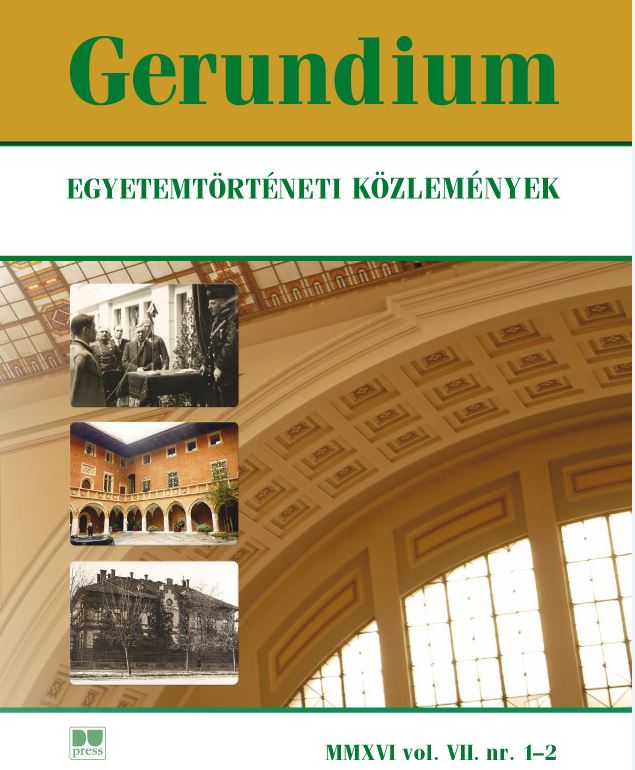A hadiárva és a hadirokkant apával rendelkező hallgatók számának emelkedése az egyetemeken az 1930-as években
Author
View
How To Cite
Abstract
AN INCREASE IN THE NUMBER OF WAR-ORPHAN STUDENTS AND STUDENTS WITH WAR-DISABLED FATHERS AT HUNGARIAN UNIVERSITIES IN THE 1930S. he thematic focus of the present study is a somewhat neglected phenomenon: the sudden rise in the number of war-orphan university students and students with war-disabled fathers in the irst half of the 1930s. During and immediately after World War One institutions of higher education were called upon to accept the enrollment of a large number of veterans who returned from the war with physical injuries and psychic scars: often these ”veterans” were returning war-disabled students. By the beginning of the 1930s the focus of relief of disabled servicemen shifted to those whose father had either died or became war-disabled in the Firsts World War. As early as the academic year of 1929/30 this shift was well discernible, by the 1934/35 academic year, however, there came a steep rise in their relative number. he present study ofers a glimpse at those natural causes and administrative measures that will make it more understandable to sort out the factors at work. It will also ofer an insight into the life and social circumstances of war-orphan students and the ones who had a war-disabled father.







